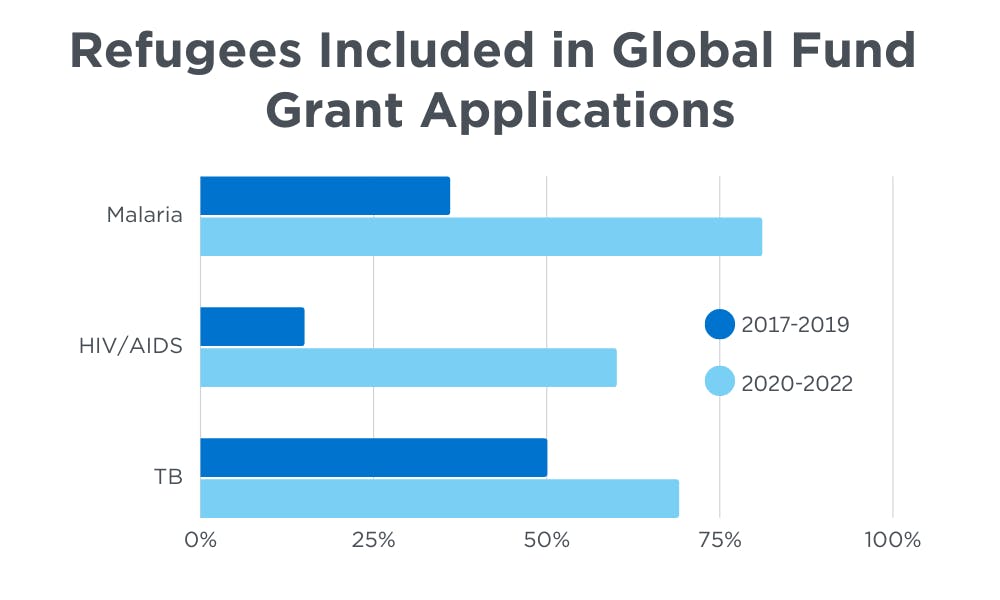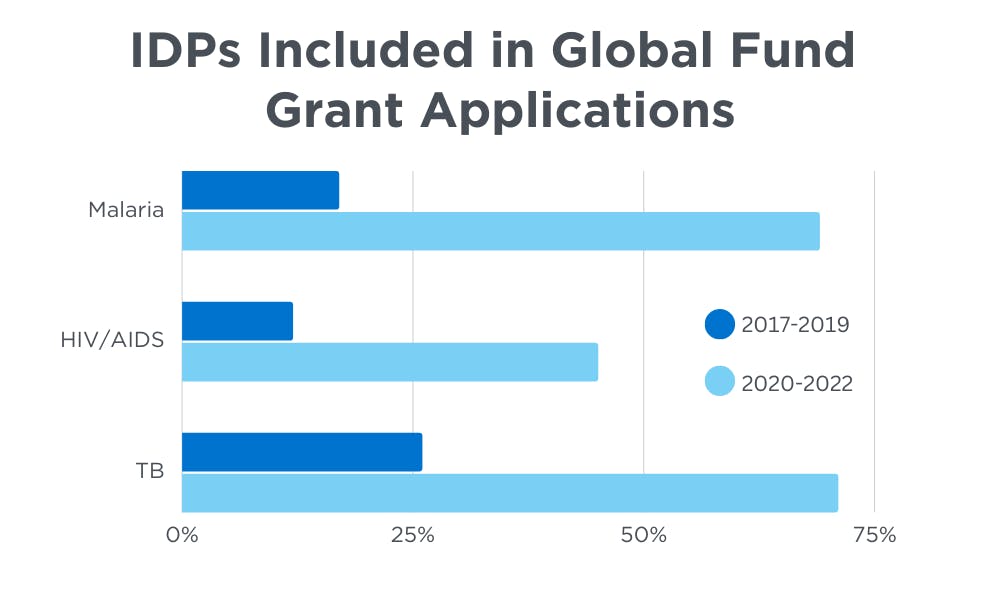Last updated January 24, 2023
Written by: Dana McLaughlin, Senior Global Health Associate, United Nations Foundation
Malaria, HIV/AIDS, and tuberculosis (TB) present unique risks to refugees and internally displaced persons (IDPs) around the world. High levels of mobility, inadequate living conditions, reduced access to health services, and a combination of socio-economic, cultural, gender and language barriers all contribute to increased risk of exposure.
According to UNHCR, the United Nations High Commissioner for Refugees, in mid-2022 there were more than 102 million displaced people globally, with almost two-thirds living in malaria-endemic regions.
As one of the largest financiers of global health programs, the Global Fund to Fight AIDS, TB and Malaria has become a vital source of support to ensure refugees and IDPs have access to quality disease prevention, treatment, and care services for the three diseases. Over the past five years, the United Nations Foundation has partnered with UNHCR and the Global Fund to address the lack of inclusion of refugees and IDPs in Global Fund grant applications.
The most recent iteration of this analysis, which examined applications from the 2020-2022 funding cycle, revealed that when compared to the previous funding cycle (2017-2019), the inclusion of targeted activities for refugees, IDPs, and other migrant populations in Global Fund grant applications has increased significantly across all three diseases.
The full results of the analysis – including downloadable regional scorecards and ArcGIS maps that depict the overlap between malaria incidence, HIV prevalence, and populations of concern – can be found here. Some of the key findings include:


Our analysis identifies Global Fund recipient countries that have successfully implemented tailored malaria, TB, and HIV activities to meet the needs of refugees and IDPs locally.
While the analysis shows improvements in the inclusion of targeted activities for displaced populations in Global Fund funding requests (from 36% to 81% for refugees and from 17% to 69% for IDPs) in recent years, this is only a first step to ensure that these programs actually are reaching the people they are designed to reach with the things they need to stay healthy.
To accelerate the inclusion and implementation of targeted HIV, TB, and malaria activities for migrant and other populations living in complex operating environments, they must be prioritized in national policies, programs and financing. The UN Foundation has consulted with UN and non-UN humanitarian stakeholders to discuss how we can accelerate efforts that promote the inclusion of migrant, marginalized, and last-mile populations in global health policy, financing, and disease-specific programs at the national, regional, and international levels.
Over the past six months, the UN Foundation hosted cross-sectoral consultations with multilateral, government, and civil society partners across the humanitarian-development nexus to identify ways to extend and sustain community-based malaria, HIV, and TB interventions to people on the move, communities facing disaster, crises or conflict, and other hard to reach populations.
These conversations have supported the generation of best practices and case studies and allowed for the development of targeted recommendations for donors, humanitarian partners, and countries that host large migrant and displaced populations.
Dana McLaughlin is a former Senior Global Health Associate at the UN Foundation. In her most recent role, Dana led the UN Foundation’s work on migration-related health issues and supports the global health team’s work on multilateral partnerships, WHO reform and financing, pandemic preparedness, and global health security. Dana holds a master’s in public health from Johns Hopkins’ Bloomberg School of Public Health. She is based in Washington, DC. You can follow her on Twitter at @dmclaughlin_mph.
To get the latest Global Health news from experts like Dana, subscribe to our monthly newsletter.